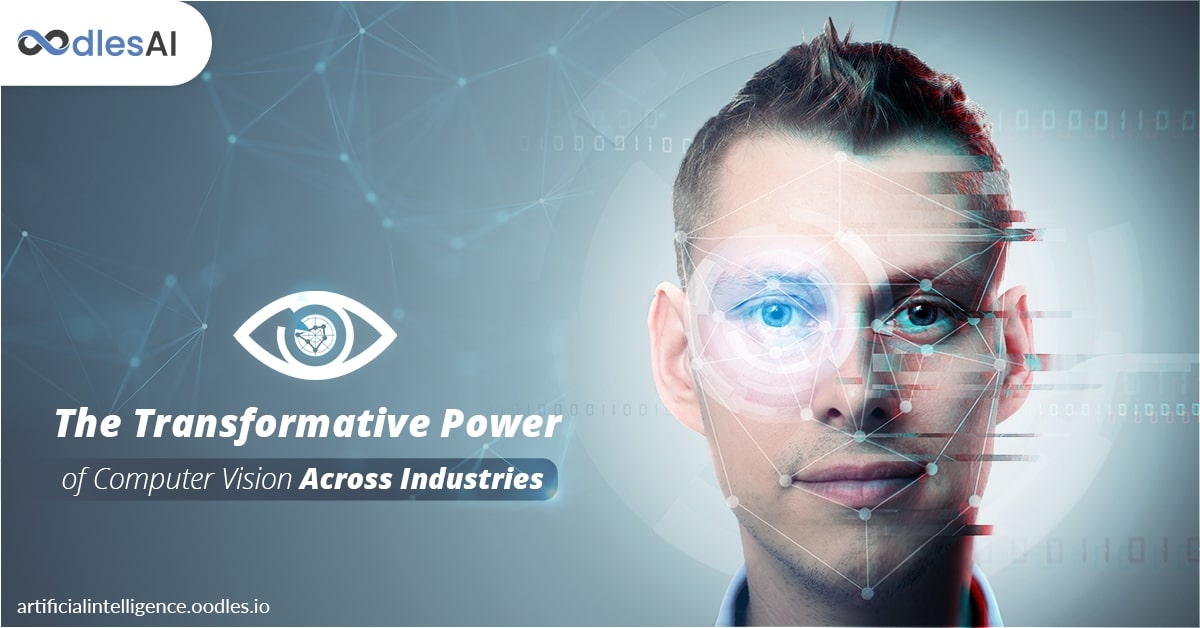Computer technology has always been a rapidly evolving field which outdates previous innovations in a short timespan. The advancements in computer technology range from wireless charging to the ever-increasing memory storage. Many digital trends have come and gone since the advent of smartphone technology. Nevertheless, artificial intelligence is an endowment of computer technology that has set a benchmark in the field of technological innovations.
Over recent years, AI technology has advanced further with new techniques like image processing, OCR, pattern recognition, and handwriting recognition. The computer vision techniques have become more accurate at recognizing patterns from images, videos, and real-life experiences as compared to human cognitive systems. The goal of computer vision algorithms is to extract and analyze the content from digital media files. Read further to explore how computer vision can transform various industries the way they serve humans.
Computer Vision Applications in Different Industries
Healthcare: Computer vision has the potential to complement routine diagnostics that require time and assistance from human physicians. For instance, Gauss Surgical is producing a real-time blood monitor that eliminates the problem of inaccurate blood loss measurement during injuries and surgeries. The monitor comes with an intuitive app that uses an algorithm to analyze pictures of surgical sponges. It then predicts the amount of blood loss during surgical treatment.
Automotive: Recent data from the World Health Organization (WHO) shows that more than one million people die every year in car accidents. These accidents mainly happen due to human errors or lack of attention while driving. Computer vision can make a real difference in the automotive industry by adding important safety features to the vehicles. If a car could detect danger, it would stop before an accident happens, saving countless lives. Several self-driving systems use computer vision to detect traffic signals and drive smoothly without causing accidents or damage to the property. Other applications include parking safety which aims to reduce car accidents that happen during reversing or parking in tight spaces. For example, reverse cameras equipped with parking sensors can detect obstacles and trigger warning signals when a car approaches an object. Similarly, front cameras can ensure that the integrated computer assesses the distance from a vehicle in front. Keeping vehicles at a safe distance reduces the risk of accidentally bumping into other vehicles.
Agriculture: Cattle rearers can use facial recognition techniques to identify different types of animals in a herd. They can use advanced herd monitoring systems that require less human intervention. Produce growers for some of the leading grocers around the world, including Walmart, are using computer vision. It enables them to detect pests in their crops or different types of plant diseases. Further, they can learn more about their plants in general and grow high-quality crops for better returns on sales.
A company called SlantRange uses drones with computer vision cameras to scan the crops and identify potential threats. The drone hovers at an altitude of about 400 feet with a 4.8 cm/pixel resolution camera. Once it is airborne, the camera takes pictures of the crops to detect the possible hazardous conditions. It includes instances such as infestation and lack of water nutrition. Moreover, it accurately predicts crop yields and determines the right time to harvest. Hence, it allows farmers to take the necessary actions to save their crops beforehand.
Retail Stores: Last year, Amazon launched a retail store that enables shoppers to bypass a queue and pay for their merchandise right away. The underlying technology behind the store is called Just Walk Out. Shoppers need to activate the iOS or Android mobile phone app before entering the store’s gates. Computer vision facial recognition cameras are used to let employees know when something is taken from the shelves. If an item is returned to the shelf, the system can also remove that item from the customers’ shopping cart. The network of cameras enables the app to track people in the store at all times. It ensures that the billing is done for the right items and to the right shopper as they walk out. The app generates an online receipt and charges the cost of products to their Amazon account.
Banking: Banks and financial institutes can use image recognition software to prevent fraud instances by authenticating documents via machine learning. Know Your Customer (KYC) is an essential process for authenticating computer vision applications. The technology enables banks to shift their focus from duplicate databases and use biometrics for identification of their prospective clients. Computer vision technology streamlines the KYC process by enabling prospective customers to open accounts via smartphones. The European bank BBVA has attracted numerous customers, enabling them to open accounts by taking a selfie or via video calls. The solution enables banks to increase customer convenience and move further in the customer-centricity journey.
The technology also enables organizations to analyze customer behavior in real-time through emotion recognition by analyzing micro-expressions, pupil dilation, and eye movements. Banks can capitalize on the information by offering personalized products and convenient accounts-related processes. Similarly, computer vision can track the intent of individuals near cash points and detect threats in real-time. As such, it will provide a safe environment for their customers.
Read More: Zooming into the world of Computer Vision applications
Conclusion
In its current state, computer vision is an important part of the digital factory. It has the potential to transform every field that one can imagine. Businesses can explore new opportunities using AI-based solutions that have computer vision integrations. AI solutions with computer vision can identify faces and analyze customers’ sentiments to offer them relevant suggestions and services.
Why Choose Oodles for Artificial Intelligence Services
Streamline your business processes with AI-based application solutions. Talk to our seasoned AI team to enhance your business operations. We have an AI toolkit to develop feature-rich AI applications efficiently. Our services range from developing computer vision applications to chatbots, NLP, and recommendation systems.
Don’t know where to start? Click here and talk to our experts.
#machine-learning
